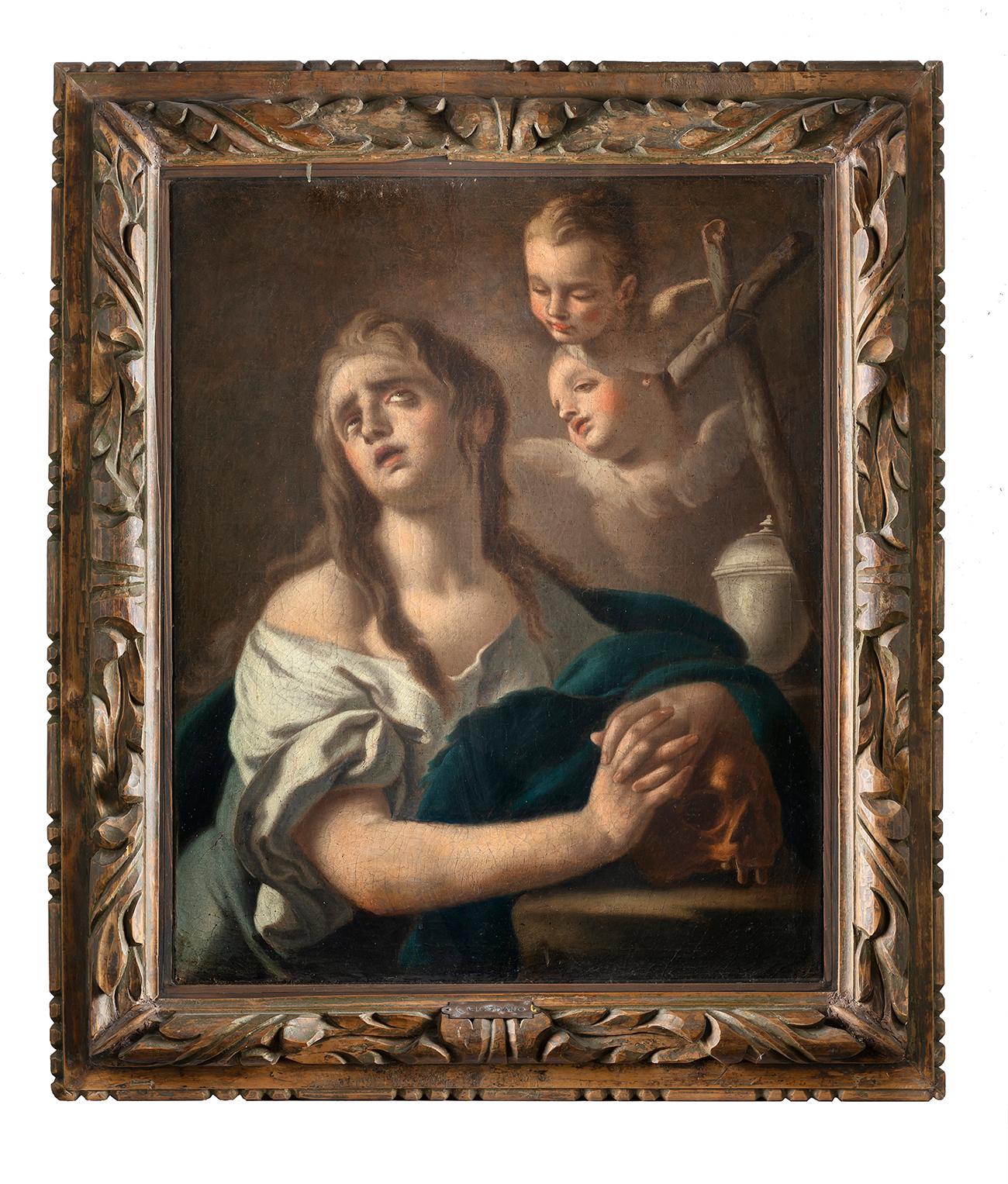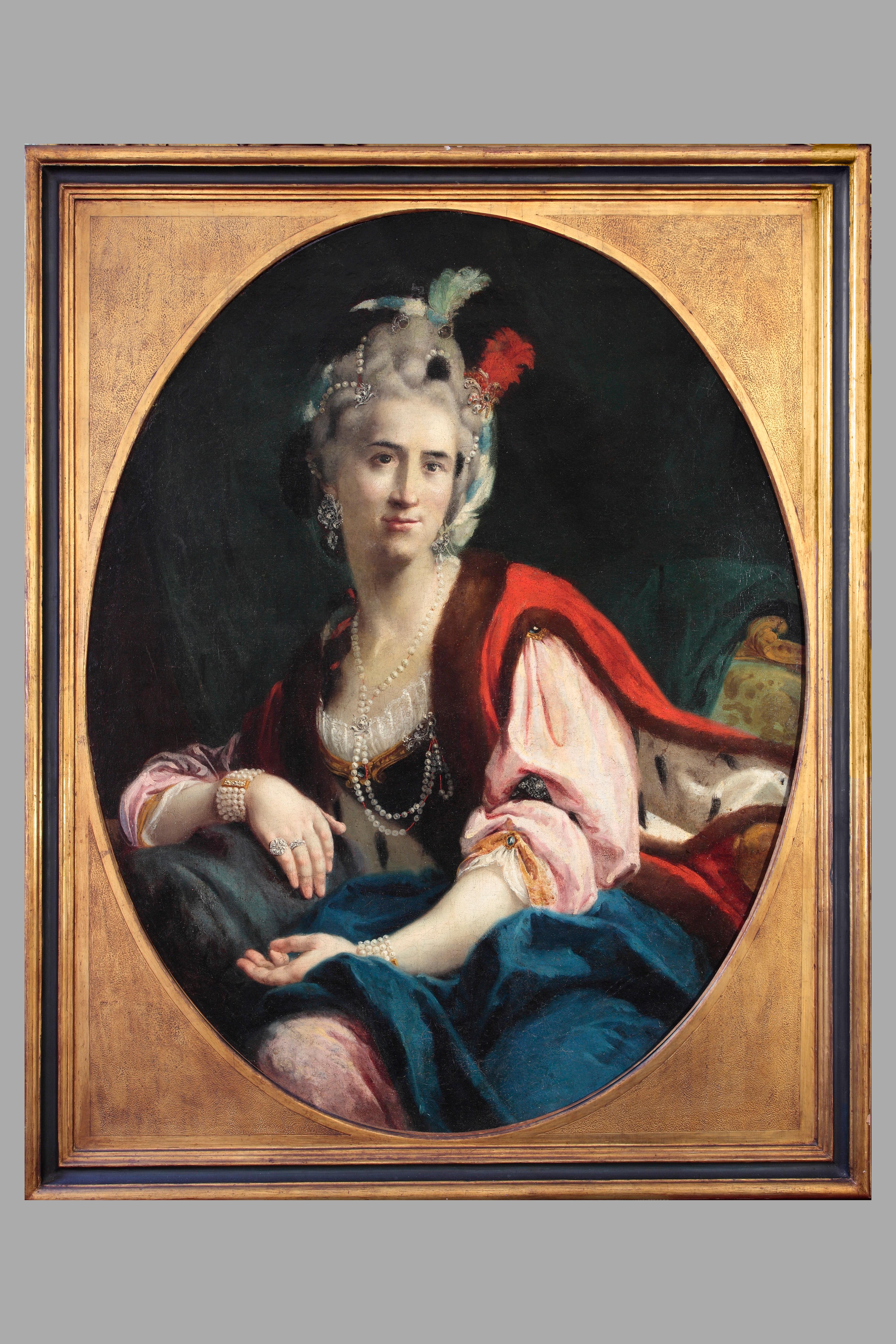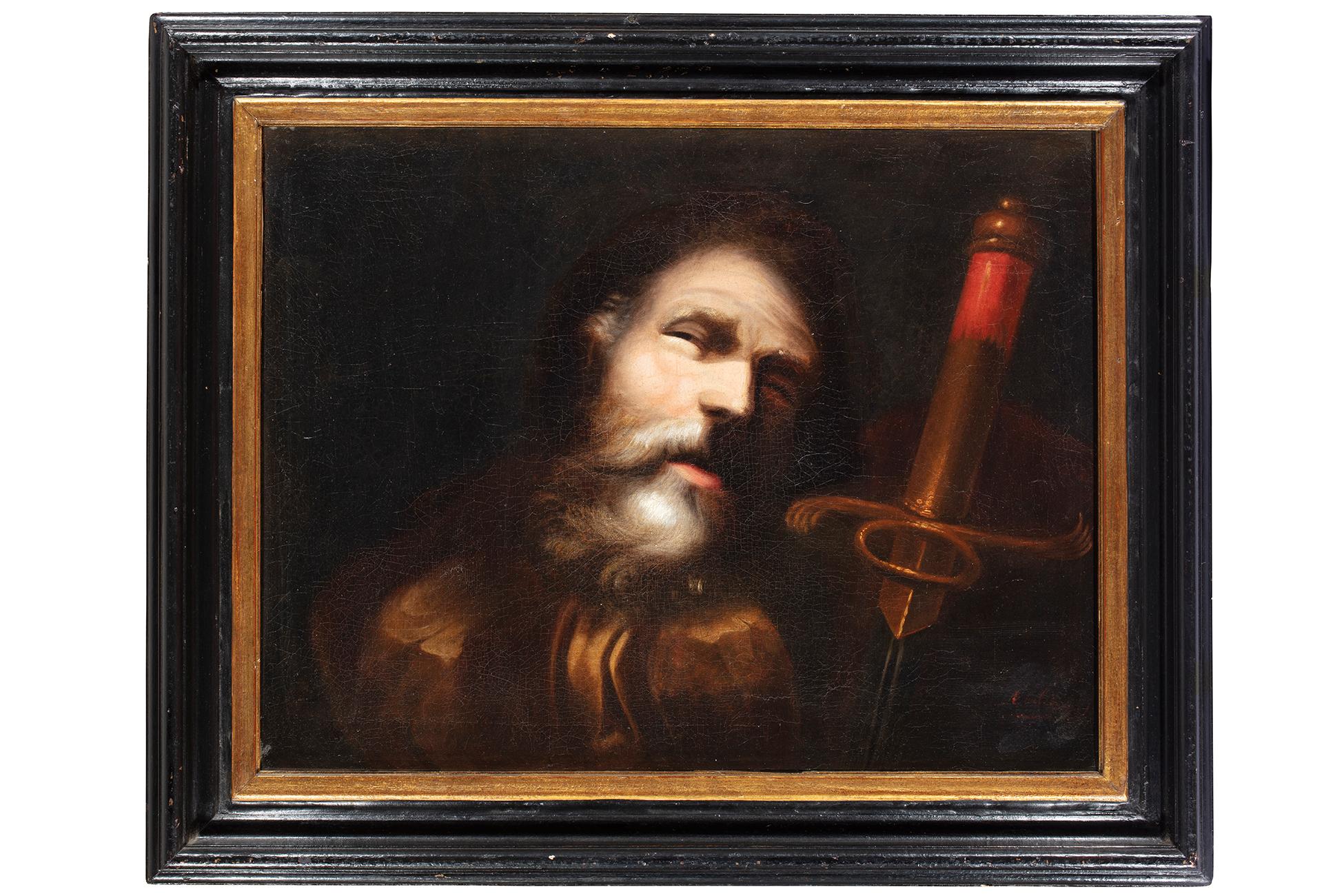Items Similar to The Hon. John Spencer
Want more images or videos?
Request additional images or videos from the seller
1 of 6
John VanderbankThe Hon. John Spencerc. 1737
c. 1737
About the Item
PROVENANCE
Presumably commissioned by the sitter’s father-in-law, John Carteret, 2nd Earl Granville, Haynes Park, Thence by descent,
Lady Louisa Carteret , who married Thomas Thynne, 2nd Viscount Weymouth, thence by descent,
Henry Frederick Thynne, 1st Baron Carteret (1735 – 1763), thence by descent;
Lord John Thynne (1788 – 1881), Haynes Park, Bedfordshire
His Sale, The Thynne Heirlooms; Christie’s, London, 1 May 1911, lot 54 (to Cohen)
Private Collection, England
Anonymous Sale, Christie’s, London, 11 July 1997, lot 54 (as attributed to Stephen Slaughter)
Private Collection, South Africa
LITERATURE
Herbert Minton Cundall, Handbook for Hertfordshire, Bedfordshire and Huntingdonshire; with Maps and Plans, John Murray, London, 1895, pg. 130
The Honorable John Spencer, Diana Princess of Wales 5 x great grandfather, was born on the 13 May 1708 and was the youngest son of Charles Spencer, 3rd Earl of Sunderland and his wife Anne Churchill, daughter of the 1st Duke and Duchess of Marlborough. John was only 7 when his mother died and he was consequentially bought up by his grandmother, the infamous Sarah, Duchess of Marlborough. Unlike his brothers, John had not inherited a title, despite this, his Grandmother wrote that “I design to set up the only grandson I have now that is a commoner, John Spencer, who has a very considerable fortune for a younger brother, and I will it as good as most elder brothers”. This was certainly the case and the inheritance from his grandmother allowed John to live an immensely comfortable life. After attending Eton, he undertook a Grand Tour between 1725 and 1727 going to France, Switzerland and Italy.
In 1732, John Spencer succeeded his cousin, William Godolphin, Marquess of Blandford, as the Member of Parliament for Woodstock, a seat he held until his death in 1746. He is also listed as one of the founding governors for the Foundling Hospital, set up to educate and house deserted young children.
On the death of his father, in 1722, he inherited vast swathes of land, notably the family estates in Northamptonshire, including Althorp, as well as already having the properties given to him by his Grandmother, including Wimbledon Park. Shortly after he came into his inheritance he married Georgiana Caroline Carteret, the third daughter and co-heir of John Carteret, 2nd Earl Granville.
John Vanderbank was the son of John Vanderbank senior, the leading tapestry weaver in the country who supplied the Royal Family with tapestries and introduced the less formal chinoiserie style in textiles. After training under his father and the artist Jonathan Richardson, Vanderbank became one of the first pupils at Sir Godfrey Kneller’s art academy in 1711 where he remained training before founding his own academy in 1720.
One of Vanderbank’s earliest commissions was his 1719 portrait of the 3rd Duke of Marlborough, John Spencer’s older brother, on horseback. This was such a success that other aristocratic commissions soon started to follow, including from King George II and Queen Caroline which cemented his position as a leading Court portraitist.
This interesting full-length portrait depicting John Spencer in Hussar’s uniform was noted by art historian Minton Cundall as hanging in the drawing room at Haynes Park in 1895, alongside the portrait of Spencer’s wife Georgiana Carteret, also by Vanderbank and now in the collection of the Earl Spencer at Althorp. It is highly probable that these two works were commissioned by John Carteret, 2nd Earl Granville for the couple’s marriage in 1732 and hung together as pendant works.
John Spencer was a popular figure at Court and great friends with Frederick, Prince of Wales. Indeed, his portrait is also captured by the equestrian artist John Wootton in a series of works in the Royal Collection showing the Prince of Wales accompanied by courtiers whilst shooting and hunting. Spencer’s position at Court was reflected in his appointment as the Ranger of Windsor Great Park, after the death of his Grandmother in 1744, who held the position previously.
Unusually, the rich Hussar’s uniform which Spencer wears seems to have been chosen as Court fancy- dress rather than to indicate a military position. Spencer was a politician and landowner rather than a military man and there does not appear to be any record of him serving with an Hussar regiment. Vanderbank’s capability in recreating the rich materials and textiles of this exotic uniform gives the sitter an added gravitas and the size of the portrait gives additional swagger.
- Creator:John Vanderbank (1694 - 1739, British)
- Creation Year:c. 1737
- Dimensions:Height: 97.5 in (247.65 cm)Width: 57 in (144.78 cm)Depth: 2 in (5.08 cm)
- Medium:
- Movement & Style:
- Period:
- Framing:Framing Options Available
- Condition:A condition report can be provided if requested.
- Gallery Location:London, GB
- Reference Number:1stDibs: LU1959214144542
About the Seller
No Reviews Yet
Vetted Seller
These experienced sellers undergo a comprehensive evaluation by our team of in-house experts.
Established in 2020
1stDibs seller since 2022
- ShippingRetrieving quote...Ships From: London, United Kingdom
- Return PolicyThis item cannot be returned.
More From This SellerView All
- Cosimo III de MediciBy Justus SustermansLocated in London, GBJustus Sustermans was first recorded working for the Medici in Florence in October 1621. He then worked continuously for the Grand Dukes until his death 60 years later in 1681. Suste...Category
17th Century Old Masters Portrait Paintings
MaterialsOil, Canvas
- Lady Catherine Edwin (Née Montagu)By Michael DahlLocated in London, GBProvenance The Sitter (Probably commissioned for the marriage of Samuel Edwin and Lady Catherine Montagu in 1697), Thence by descent, Charles Edwin (c. 1670 - 1716), Llanmihangel Pl...Category
17th Century Old Masters Portrait Paintings
MaterialsCanvas, Oil
- Portrait of a GentlemanLocated in London, GBPeters was born in Freshwater, Isle of Wight, the son of Matthew Peters (born at Belfast, 1711), a civil engineer and member of the Royal Dublin Society; by Elizabeth, the eldest daughter of George Younge of Dublin. The family moved from England to Dublin when Peters was young, where his father "advised on the improvement of loughs and rivers for navigation" and published two treatises on the subject. Peters received his artistic training from Robert West in Dublin; in 1756 and 1758 he received prizes from the first School of Design in Dublin. In 1759, he was sent by the Dublin Society to London to become a student of Thomas Hudson and won a premium from the Society of Arts. The group also paid for him to travel to Italy to study art from 1761 to 1765. On 23 September 1762 he was elected to the Accademia del Disegno in Florence. Peters returned to England in 1765 and exhibited works at the Society of Artists from 1766 to 1769. Beginning in 1769, Peters exhibited works at the Royal Academy. In 1771 he was elected an associate and in 1777 an academician. He returned to Italy in 1771 and stayed until 1775. He also probably traveled to Paris in 1783–84, where he met Léopold Boilly, Antoine Vestier, and was influenced by the work of Jean-Baptiste Greuze. On 27 February 1769, Peters became a freemason, and he was made the grand portrait painter of the Freemasons and the first provincial grand master of Lincolnshire in 1792. In 1785, he exhibited portraits of the Duke of Manchester...Category
18th Century Old Masters Portrait Paintings
MaterialsCanvas, Oil
- Joseph Pardons his BrothersBy Giulio CarpioniLocated in London, GBGiulio Carpioni was most likely born in Venice in 1613 and trained under the artist Alessandro Varotari known as Il Padovanino. After travelling to Rome early in his career he sett...Category
17th Century Old Masters Figurative Paintings
MaterialsCanvas, Oil
- CleopatraLocated in London, GBGabriel Revel was born in 1642 in the town of Chateau-Thierry in the province of Champagne. Although the name of his father is unknown, his profession was that of a ‘painter-glazer’ so the young Gabriel would no doubt have learnt the basic skills to become an artist in his father’s studio from an early age. Little is known of Revel’s early career however by 1671 he was working on the decorative schemes at Versailles and Gobelin under Charles le Brun, indicating his skill was great enough to be considered one of the finest artistic talents of the day. In 1683, Gabriel became a member of the Royal Academy after submitting his portraits of François Girardon and Michel Anguier. This success led to a number of commissions outside of Paris in the provinces, especially Dijon which he travelled to regularly until moving there permanently in 1692 after the death of Le Brun. Revel clearly took artistic influence from the fashions of the day using bold colours and fine detail to create highly decorative works. His Group Portrait, dated 1686 in the Portland Art Museum shows the central figure, much like the painting of Cleopatra in question, looking upwards wrapped in a rich blue drapery wearing jewel encrusted clothing. This type of decoration and composition would have had a base in Le Brun’s historical works and would almost certainly have been a style Revel developed whilst working on the decoration at Versailles. Whilst in Dijon, Gabriel painted virtually without competition and further circulated the style of historical painting popularized at Versailles by Le Brun. One of his most significant commissions in Dijon is the ceiling painting...Category
17th Century Old Masters Nude Paintings
MaterialsCanvas, Oil
- Study - Hon. Catherine Trevor, Viscountess Hampden with Verso Lady Anne GowerBy George RomneyLocated in London, GBPROVENANCE Private Collection, England Colonel Charles William Garnde Walker (1882 - 1974) Thence by descent to; Sir Michael Walker (1916 - 2001) Thence by descent We are grateful t...Category
1770s Old Masters Drawings and Watercolor Paintings
MaterialsLaid Paper, Pen
You May Also Like
- Oil Painting Portrait, attributed to John Vanderbank (1694-1739)By John VanderbankLocated in Uppingham, GBOil Painting Portrait of John Campbell, 4th Duke of Argyll,, att to John Vanderbank (1694-1739) Housed in a swept frame which has been restored after photo. Canvas Size 50" x 40", Fr...Category
1690s Old Masters Portrait Paintings
MaterialsCanvas, Oil
- 18th Century by Pietro Bardellino Mary Magdalene Painting Oil on CanvasBy Pietro BardellinoLocated in Milano, LombardiaPietro Bardellino (Naples, 1731 – Naples, 1806) Mary Magdalene Oil on canvas, cm. 75 x 60 – with frame cm. 97 x 82 Antique shaped and carved wooden frame Publications: unpublished T...Category
Mid-18th Century Old Masters Portrait Paintings
MaterialsCanvas, Oil
- 18th Century By Dalla Rosa Portrait of Angela GuggerottiFracastoro Oil on CanvasLocated in Milano, LombardiaFrame in lacquered and gilded wood. The painting is mentioned in Dizionario Biografico degli Italiani Treccani in the biography of the artist.Category
18th Century Old Masters Portrait Paintings
MaterialsCanvas, Oil
- 17th Century by Giuseppe Assereto Portrait of an Elderly Woman Oil on CanvasBy Giuseppe AsseretoLocated in Milano, LombardiaGiuseppe Assereto (Genova - 1626 ca – Genova 1656/57) Portrait of an elderly woman, possible portrait of Maddalena Massone, wife of Gioacchino Assereto Oil on canvas, cm. 65,5 x 51,5...Category
Early 17th Century Old Masters Portrait Paintings
MaterialsCanvas, Oil
- 19th Century By Giuseppe Molteni Portrait of a Woman Oil on CanvasLocated in Milano, LombardiaBeautiful original frame in gilded wood. Expertise by Prof. Fernando Mazzocca.Category
19th Century Old Masters Portrait Paintings
MaterialsCanvas, Oil
- 17th Century by Juan Alfonso Abril Head of St Paul Painting Oil on CanvasLocated in Milano, LombardiaJuan Alfonso Abril (active in the 17th century in Valladolid) Head of Saint Paul Oil on canvas, cm. 48,5 x 62 - with frame cm. 63 x 76,5 Shaped wooden f...Category
Early 17th Century Old Masters Figurative Paintings
MaterialsCanvas, Oil





